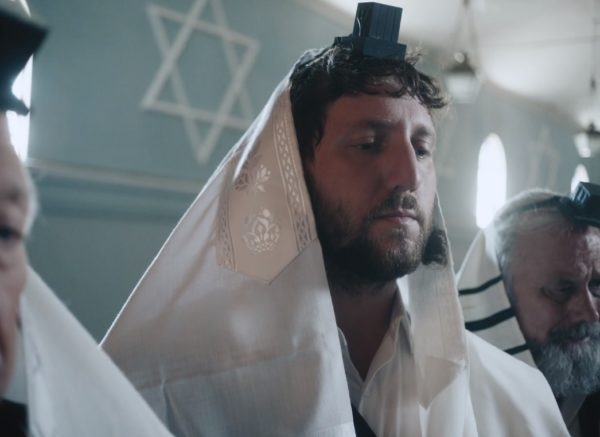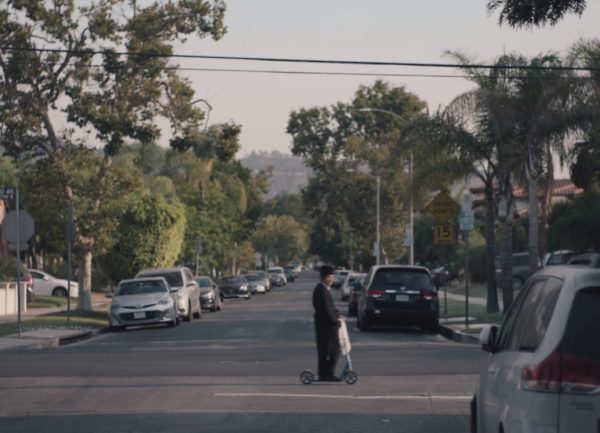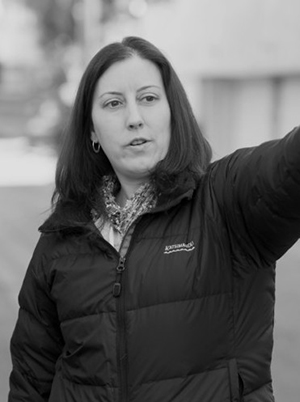
 Iris Blogger: Black Hat also feels like a very “L.A.” film. There's a shot, early on, of a Hasidic man riding a scooter across a road lined with palm trees which has that kind of heightened, almost magic-realist quality you get in some films set in LA. How important was setting to the film?
Sarah Smith: Oh thanks, that’s cool to hear, you’re never quite sure how these things will land. I worked in Midwood, Brooklyn for a time, and now live near the Fairfax district in Los Angeles. My experience with the community is pretty limited, it’s from seeing Orthodox people at a distance, mainly on the street, which I think is true of most people outside the Orthodox community. So I wanted to start the film with that perspective, and then bring the audience into that world in an intimate way. As far as setting the film in Los Angeles is concerned, it was important that the setting be authentic, but it was, ultimately, a choice of using what was around us. Sometimes you catch a little bit of magic, and we just got lucky with some of those shots.
Iris Blogger: There’s very little dialogue in the film - many of its emotional beats are visual. Was there ever a temptation to give Shmuel more dialogue, or was that focus on visual storytelling already there in the script?
Iris Blogger: Black Hat also feels like a very “L.A.” film. There's a shot, early on, of a Hasidic man riding a scooter across a road lined with palm trees which has that kind of heightened, almost magic-realist quality you get in some films set in LA. How important was setting to the film?
Sarah Smith: Oh thanks, that’s cool to hear, you’re never quite sure how these things will land. I worked in Midwood, Brooklyn for a time, and now live near the Fairfax district in Los Angeles. My experience with the community is pretty limited, it’s from seeing Orthodox people at a distance, mainly on the street, which I think is true of most people outside the Orthodox community. So I wanted to start the film with that perspective, and then bring the audience into that world in an intimate way. As far as setting the film in Los Angeles is concerned, it was important that the setting be authentic, but it was, ultimately, a choice of using what was around us. Sometimes you catch a little bit of magic, and we just got lucky with some of those shots.
Iris Blogger: There’s very little dialogue in the film - many of its emotional beats are visual. Was there ever a temptation to give Shmuel more dialogue, or was that focus on visual storytelling already there in the script?

Programme 5 | Faith and Freedom | Cineworld Screen 15 | Thur 10 Oct 12pm
Buy tickets for Programme 5 / Buy festival passes
Picture Descriptions
1 - Screenshot of the opening title: Black Hat, in large white letters. This are superimposed over a birds-eye-view shot of the steps outside a synagogue. Two Hasidic Jewish men are walking down the steps, wearing black suits and black wide-brimmed hats. It is early evening and their shadows are drawn out against the steps.
2 - Photograph of the film's director, Sarah Smith, in black and white. She is outdoors, wearing a thick black jacket, and would appear to be at work, giving directions on a film location. She has shoulder-length dark hair.
3 - Shmuel, played by Adam Silver, is at prayer inside the synagogue. He is wearing a tallit, a Jewish prayer shawl, over his head, and the tefillin, two black leather boxes, on his forehead. Note: The tefillin contain scrolls featuring quotations from the Jewish holy text, the Torah.
4 - An Hasidic Jewish man rides a kick scooter across a Los Angeles avenue lined with palm trees. It is dusk, the shadows of the trees and parked cars stretching across the sunlit road.
5 - Shmuel sits in a bar, talking to another man, who is smiling at him. Shmuel is wearing a woollen hat to hide his sidecurls, or 'peyot'.

